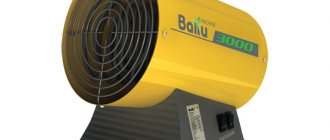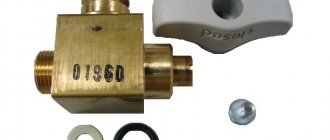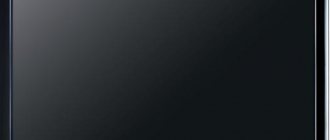An electric kettle “lives” in any kitchen. It is even available in houses with gas pipelines. The cooler lives mainly in the office, restaurant or supermarket. This device is extremely rare in everyday life. Moreover, the very idea of buying a cooler for the home seems blasphemous and ridiculous to us. After all, at first glance, a kettle is much more profitable than an office dispenser. But is it? Let's figure it out together.
What is more economical - a cooler or a kettle?
If you think that the most economical appliance is an electric kettle, then you are very mistaken. Judge for yourself, the energy consumption of an average kettle is 1.5-2.0 kW. The same power is consumed by household heating devices - oil radiators. Cooler power consumption is 0.5-1.0 kW. That is, during a conventional hour of operation, it “eats” three times less electricity than a kettle.
Skeptics will say that the kettle boils for 24 hours a day, but only for 2-3 minutes, but the dispenser does not waste electricity around the clock, but only from time to time, maintaining a temperature of 90-95 °C in the heating tank. Its volume does not exceed 1.5-1.8 liters. And this is for the largest office model, while home versions are equipped with heating tanks of 0.5-1.0 liters.
A truly economical dispenser model consumes no more than a kilowatt of electricity per day. And this is together with the cooling unit. An electric kettle spends approximately the same amount, consuming water only for heating. Moreover, most of the cooled boiling water in this case is poured into the sink, which is not very good from the point of view of economical consumption.
How much electricity does the cooler consume?
The numbers are approximate. With electronic cooling up to 700 Watt/day. With compressor 1.2 kW/day. It all depends on the equipment and use.
To reduce energy consumption, modern models are equipped with an “ECO” mode and a turbo heating function. The use of such innovations allows you to save up to 30% energy compared to models of previous years.
To reduce consumption, the design includes mechanical timers and thermostats. The timer can be configured to the necessary modes for turning on and off the cooler. As a rule, it is designed for a week.
The thermostat prevents overheating. It allows you not to boil water, but to maintain heating at the required temperature. As the temperature approaches 90-95 degrees, the thermostat is activated and the heating elements are turned off.
When the water cools to 86 degrees, the thermostat turns on the heating. When initially turned on, heating occurs within 15-20 minutes. Reducing the water temperature takes a little longer, about 60 minutes.
What is healthier - water from a cooler or a kettle?
We've looked at what's good from a savings point of view. Now let's see which device is healthier. More precisely, what is healthier – water from a dispenser or from a kettle. Just let’s not go deep into discussions about living and dead water, the structuring of molecules during boiling and other subtle matters. From a scientific point of view, these arguments don't sound very good. Therefore, we will consider the dispenser and kettle from the following positions:
- heating temperature;
- heating flask material;
- presence of a pre-filter;
- Possibility of re-boiling.
The economical kettle heats water up to 100 °C, is made of heat-resistant plastic, has no filter and allows repeated boiling (four out of five users simply add liquid to the flask). After this clarification, the idea of drinking water from a kettle does not sound very good. After all, this liquid was in contact with plastic at a temperature of 100 °C and collected scale throughout the day.
The economical dispenser heats water up to 95 °C, and its tank is made of food-grade stainless steel. In addition, if the manufacturer wants the dispenser to sell well, he will put at least a basic mechanical filter in the housing. And the cooler does not have the ability to boil even in theory - this economical device heats the liquid only up to 95 °C. Therefore, there is no scale in its tank.
As a result, we can say that water from a cooler is good, but boiling water from a kettle is not as good as we would like.
Main characteristics
The main operating parameters include:
- The overall dimensions of the case and weight, which determine the stability and method of installation of the equipment. Coolers weigh up to 30 kg; installing a 23-liter bottle and storing drink ingredients in a cabinet brings the weight up to 60 kg.
- Control method: most dispensers use valves with lever-operated valves. There are products with a push-button unit connected to the taps by a mechanical or electrical circuit.
- The installation location of the bottle, top-mounted options are cheaper, but a person needs to periodically lift a tank weighing about 20 kg to a height of up to 1.5 m. Bottom-mounted models are equipped with a pump, which leads to higher prices and more complex designs.
- The power of the heating circuit, which uses sealed stainless steel tanks and tubular heating elements. The spiral consumes about 500–600 W, which is 2.3–3 times lower than the power of an electric kettle.
- Cooler power consumption, Peltier modules based on semiconductors have a power of up to 100 W (including fan). Compressor units with an electric motor are characterized by increased energy consumption. Power reaches 140–150 W.
- Possibility of installing tanks of different sizes. Household and office dispensers are designed for standard 10 or 19-liter bottles; some manufacturers allow the use of 23-liter containers.
- Availability of protection systems and indicators. The equipment is designed with fuses that trip in the event of a short circuit. The heating element automatically turns off when the water supply stops, ensuring the safety of the coil. Indicator lamps indicate the readiness of the device for operation.
- Possibility of installing a container for storing disposable cups (the design is in demand in office environments), the unit is attached with magnets or screws.
Which water heater saves our time?
A liter of water heated to 95°C is stored in the dispenser’s thermos tank. Therefore, cooler owners get “another cup” of tea or coffee almost instantly. To do this, they just need to open the hot water tap. Even the most economical (cheap) home coolers are capable of this trick.
A conventionally “economical” kettle requires constant attention. In this case, you can’t just pour boiling water into a cup. You will have to wait for the liquid to reach 100°C, forming scale and absorbing toxins from the plastic. Moreover, if your “economical” water heater boils, and you are busy with other things, then you will have to boil the water again, and again. Until you stand over the kettle, you won’t get hot water.
Of course, you can buy not a simple plastic kettle, but a thermopot - a model with a thermos function and automatic heating. But a good thermopot model costs as much as a household dispenser.
General information about water coolers
The equipment is designed for dosed bottling of bottled water, which is supplied in plastic containers with a capacity of 10 or 19 liters.
The liquid is supplied by gravity or using a pump; the operating algorithm depends on the method of installing the container. The design can install water cooling or heating systems; some models have a separate tap for supplying liquid directly from the bottle.
A number of manufacturers install ozonation modules that provide additional antibacterial water treatment.
There are coolers that are not equipped with a replaceable liquid reservoir (purifiers). The equipment is connected to a centralized water supply system; the built-in heater and cooler heat exchanger allow you to regulate the temperature of the distributed water. In Russia, such devices are rare due to the poor quality of liquid purification in water supply systems.
To separate impurities, a cascade filtration system is used, which requires periodic replacement of cartridges and reduces the performance of drinking water supply.
Which water heater has more functions?
This is a rhetorical question. Even the most economical cooler outperforms the most expensive electric kettle model in terms of functionality. The same thermopot - an electric kettle-thermos - can only boil and store water, while a regular dispenser is capable of:
- heat water to the desired temperature;
- store up to 2 liters of hot water in the heating tank;
- provide water at room temperature “on request.”
In addition to this, good dispenser models can cool liquids to 10 °C, carbonate water, and filter the flow from mechanical impurities at the inlet and outlet. Of course, the price of a cooler with such functionality is far from the cost of a budget electric kettle, but for quality, safety and popular functions it’s worth paying a little more than for basic needs.
What determines energy consumption?
The level of energy consumption for different models of coolers with refrigerators is not the same. It depends on several facts, including:
- operating power of all elements of the device;
- application of energy-saving technologies in manufacturing;
- operating time of the electrical appliance.
Many will say that the operating power of a refrigerator cooler is the only indicator of the level of electrical energy consumption. However, this point of view is deeply outdated.
Many of us know, for example, LED energy-saving light bulbs that have a power of, say, 12 W, and their brightness corresponds to 100 W. Therefore, fairly powerful refrigerator cooler models will not necessarily consume more energy than its less powerful counterpart. Such savings in electricity consumption are achieved through the use of energy-saving technologies in the production of this group of products.
Which device is safer - a cooler or a kettle?
Each water heater has its own disadvantages in the security system. The kettle's heating element may short out; in addition, this device is not protected from tipping over. Therefore, stories about children and adults scalded by boiling water or stung by electric current do not happen as rarely as we would like. Because of these features, children are strictly prohibited from even approaching electric kettles.
If you consider these dangers alone, the dispenser looks like a really good choice for your home and office. It is very difficult to knock over, but if such a situation happens, the boiling water will remain in the sealed flask of the water heater. In addition, there are fuses inside the housing that de-energize the water heater in the event of a breakdown in the housing or overheating at the thermostat.
In the case of a cooler, the only source of danger can be a broken thermostat. After such a breakdown, the water in the tank begins to overheat. If the fuse and back pressure valve fail along with the thermostat, the water heater can scald your hands when drawing hot water. But this scenario is unlikely. In addition, even if this happens, the user will hear the characteristic noise of a “boiling boiler” and will hasten to turn off the water heater.
Savings on operation due to rental
You can significantly reduce the cost of operating a cooler by renting it. When signing a cooler rental agreement, the tenant receives the following benefits:
- A model with the required performance. The cooler will consume a limited amount of water and electrical energy. There is no need to cool or heat excess water that is not used during the workday due to a small number of employees or visitors. And as the company develops, it is possible to change the rented model to a more productive one.
- Delivery and installation costs are already included. When concluding a rental agreement with WiseWater, the company’s employees will independently organize the delivery of the device to the office on the desired floor and carry out the connection work. The tenant does not need to pay extra.
- Maintenance is provided free of charge as part of the rent. The tenant does not need to pay for routine maintenance and replacement of filters. All operations are carried out by the lessor without additional payment.
- Replacement in case of serious damage. If the cooler fails due to defects, the renter does not need to worry about replacing it or issuing warranty obligations. The lessor will simply take the faulty device and replace it with a working one.
Which water heater is easier to maintain?
That's a very difficult question. At first, you may think that caring for a kettle is much easier than caring for a large water heater that is “powered” only by bottled water. But if you dig deeper, the following facts will come to the surface:
- The electric kettle collects scale, but the dispenser does not. Therefore, all discussions about “how to clean scale” apply only to electric kettles.
- The kettle comes into contact with hands, sometimes not very clean ones, so it is washed not only from the inside, but also from the outside. At the dispenser, only the tap is in contact with the hands, and even then not everyone. There are models that turn on the water by pressing the cup on a flag under the tap.
- The body of the kettle heats up, so all greasy stains and water drips “appear” on its surface after the first turn on. Therefore, electric kettles are washed with special products. The cooler body is always cold. It is wiped with a napkin, removing dust.
The dispenser requires careful handling. You can break the bottle stem, damage the faucet, or freeze the internal water supply. But all this can be fixed even with your own hands. The electric kettle does not require careful handling, but if it breaks, it will be easier to buy a new one. Therefore, it is very difficult for us to say which is easier to maintain - a dispenser or an electric kettle. Each water heater has its pros and cons.
Myths about increased energy consumption
There are several myths that are widespread among buyers. A cooler with electronic water cooling is a more economical option.
In summer, if the ambient temperature is more than 25 degrees, then there is no difference in energy consumption between the models.
When using the equipment, you will have to increase your electricity costs.
When considering this myth, it is worth considering that models are designed for different numbers of consumers. For home use, the power of the water cooler in kW, on a monthly basis, will not greatly affect the total amount.
In offices where there are many people present, the intensity of work can increase the amount of electricity consumed. But even here it should be remembered that coolers do not work constantly, but are turned on only when necessary.
Coolers with thermoelectric water cooling are quieter.
According to the degree of extraneous noise, the system is approximately wound. When the compressor type operates, a motor is used. Incorrect installation may cause additional noise.
Coolers do not boil water, so it can be dangerous. Bottled water is used for the cooler. During production, special equipment is used that allows you to use water even without boiling. Strict control and daily quality checks in our own laboratories help consumers not to worry about its quality.
Let's summarize: five reasons to buy a cooler for your home
Above in the text we looked at the pros and cons of electric kettles and dispensers. If you are too lazy to read this entire article or want to refresh your memory of our arguments, then here are five reasons why you should choose a home cooler:
- The dispenser consumes three times less energy than a conventional electric kettle. Of course, a couple of extra kilowatts in the monthly electricity bill will not ruin any homeowner, but the cost-effectiveness of coolers is an indisputable fact.
- The water from the dispenser is not oversaturated with scale; in addition, it does not smell like plastic and does not contain harmful secretions. Moreover, the drinking quality of the liquid is guaranteed by manufacturers and suppliers of bottled water.
- You can get a portion of boiling water from the cooler immediately, without a long wait, as in the case of an electric kettle. You don't have to sit in the kitchen, you won't forget the boiled kettle on the stove or stand. Dispensers save time and nerves.
- A critical breakdown of the dispenser is unlikely - for this to happen, three parts must fail at once (fuse, thermostat and tap). Getting scalded with boiling water from an electric kettle is a matter of minutes. Therefore, coolers are much safer than traditional water heaters.
- An important advantage of dispensers is functionality that is unattainable for an electric kettle. It boils and cools water, filters and carbonates the flow, and even maintains the temperature, like a thermos. An electric kettle can't do that.
Does this mean that electric kettles have no right to life? Of course no. Then who needs to choose a kettle instead of a cooler? In our opinion, this should be done, firstly, by those people whose home has a decent filter that guarantees high quality water. Secondly, families without small children and teenagers. Moreover, such people should not have problems with coordination. If you drop cups and spill tea and coffee, a kettle is not your choice. Thirdly, for people with not very thick wallets. For such buyers, a cheap electric kettle will not be the best, but still an affordable alternative to a safe, convenient and multifunctional cooler.











